CIRCULATION: 1,900 IN ACT & REGION Canberra Doctor is proudly brought to
Dr Sindy Vrancic on resigning

Wicked Problems, Wicked Solutions
6-7

CIRCULATION: 1,900 IN ACT & REGION Canberra Doctor is proudly brought to

6-7
Findings of widespread harassment, bullying and gender bias at ANU’s College of Health and Medicine, including the medical school, are extremely serious but unsurprising, alumni say.
AMA ACT President Dr Kerrie Aust, who graduated from the medical school in 2014, said the recently published Nixon Review into gender and culture matters at the college should be a wake-up call to the university’s decision-makers about the need for transparency and accountability.
“The ANU has lost many highcalibre medical and research staff, particularly female staff, over the years because of these very serious longstanding problems,” Dr Aust said. “On many occasions students have raised concerns with the culture of the school, and in some cases allegations that were quite serious.”
“One of the most important observations in the report is the wide gap between the university’s stated policies to protect staff and students, and what is actually happening on the ground,” she said. “Implementing those policies at the day-to-day operational level has not been adequately thought through."
Dr Aust said it was encouraging to hear the Vice Chancellor talking about the need for greater accountability in the wake of the report. “It’s really important to make sure organisations are not just paying lip service to addressing bullying, harassment and gender bias,” Dr Aust said.
Until a restructure in 2025, the college included the School of Medicine and Psychology, the National Centre for Epidemiology and Population Health and the John Curtin School of Medical Research.The university commissioned Professor Christine Nixon to undertake a review of the

brought to the attention of the Provost and the Vice-Chancellor.
Professor Nixon heard from 83 former and current staff and students and received 67 written submissions.
A summary of the report’s findings is presented in the box on page 2.
The review found ANU had a "remarkable tolerance for poor behaviour and bullying”, noting “…the most significant factor perpetuating this environment is that at ANU, poor behaviour doesn’t lead to negative consequences.”
A poor and disrespectful culture had existed at the college for many years, linked to dysfunctional leadership structures, the review found.
“Where a person is a strong research performer, this can be enough to excuse inappropriate conduct,” the report stated. “The absence of meaningful accountability and consequences has made it safe for people to ignore feedback.”
One interviewee anonymously

Informing the Canberra medical community

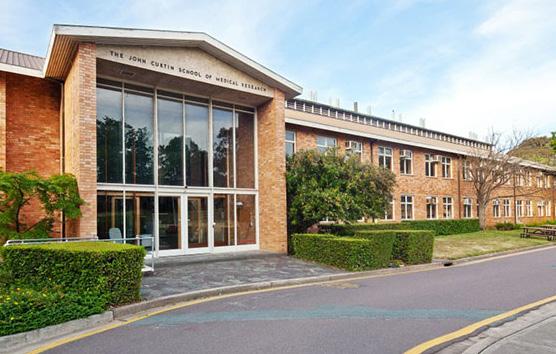
quoted in the report stated: “We do let people get away with outrageous behaviour at times because of the KPIs put on the Deans, put on the Directors, to bring in grants.”
The review noted that the reporting pathway for bullying or harassment was sometimes through a person with a longstanding connection to the perpetrator, who dismissed or diminished the concerns brought to them.
Psychiatry registrar Dr Nesha Gezer, who won AMA ACT’s Student Leadership Prize in 2022, was part of a working group that developed


a portal for students to anonymously report inappropriate behaviours. Dr Gezer told Canberra Doctor: “We know that it is often very hard for students to report inappropriate behaviours on clinical placements. Part of the issue is that as a medical student, you are straddling both the higher education space and the healthcare system and are impacted by the policies and cultures of both sectors. The other part is that students are often worried about the personal and professional repercussions of making a report.”
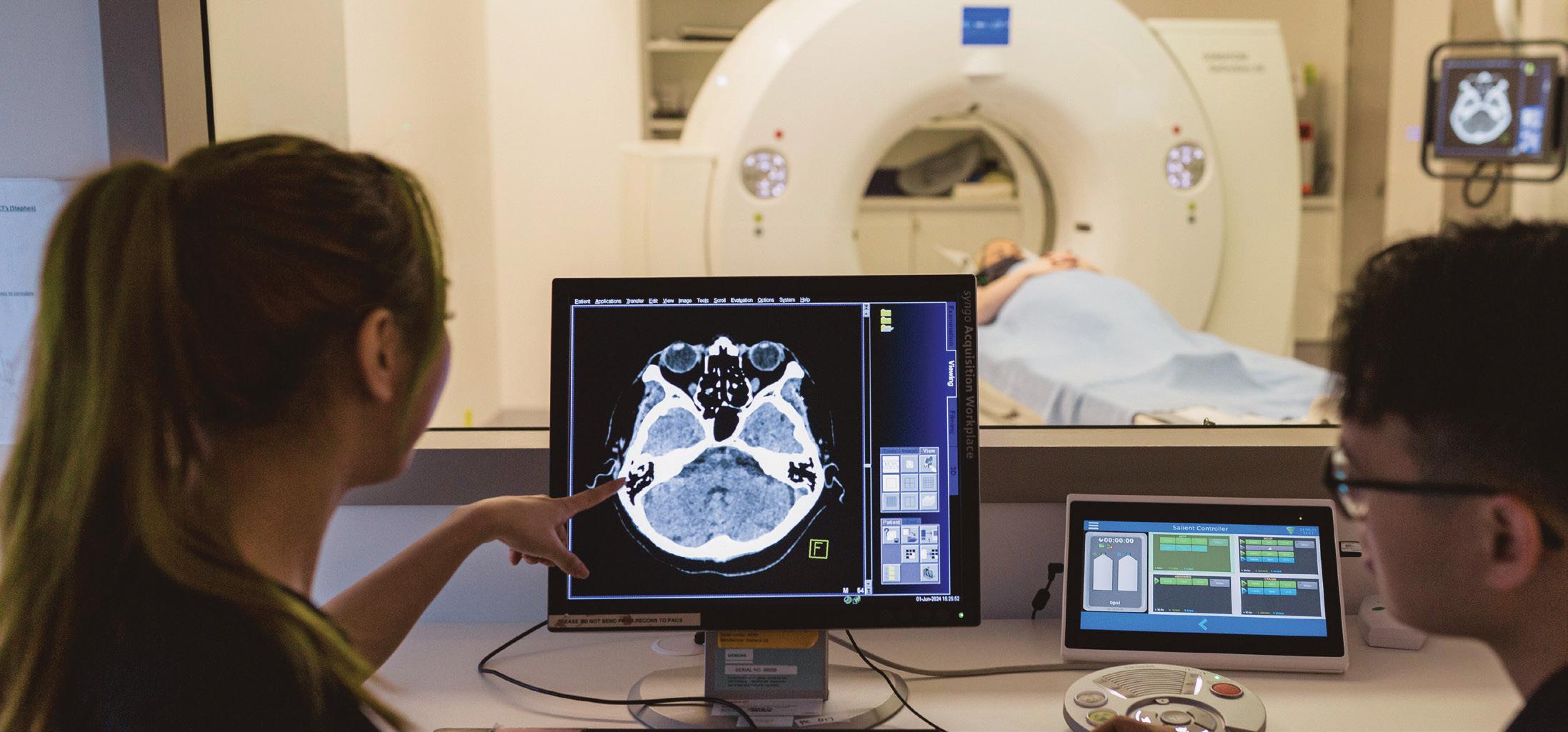

With the ACT Government set to hand down its annual budget in June, AMA ACT will be watching closely to see how Labor begins delivering on some of the promises it made at the last election.
Promises like… “A re-elected Labor Government will deliver 70,000 elective surgeries over the four years to 2028-29. We will do this by hiring more specialists in our public system to deliver more surgeries in a sustainable, efficient and effective way.”
We will look to see how the ACT Government allocates funds to make good on this promise, especially given ‘efficiency’ measures introduced in January led several experienced surgeons to resign.
Labor’s election promises also included creating a $4 million professional development and wellbeing fund for GPs; introducing robotic surgery; employing more
cardiologists; establishing a new acute palliative care ward at TCH; and expanding endoscopy services, among other things.
Given all these promises were announced before the $350 million blowout in ACT’s budget deficit was revealed, this budget may provide some clues as to whether Labor can honour its election commitments.
Private healthcare feels like it’s on a knife edge, from the collapse of high-quality general practices like Interchange (see page 4 for an update) to news that private hospital giant Healthscope has fallen into receivership. Healthscope’s network of 37 hospitals across Australia includes National Capital Private Hospital here in Canberra, with its 555 staff (15 RMOs and registrars) and around 340 VMOs.
While the Healthscope collapse has been stressful for patients and
doctors alike, the reassurances of ongoing operation are welcome. The receivers, lenders and governments all appear to be focused on maintaining continuity of service through the sale process.
Federal AMA has been working behind the scenes to try to ensure the focus remains on patient care. We will continue to closely monitor the situation and update members as news comes to hand.
As usual I’ve been on the airwaves and in print, representing the voice of the medical profession to the wider public. Topics have included World Family Doctor Day and why we need to invest in general practice; adverse events among public hospital patients; the ACT Government’s intentions to allow GPs to prescribe ADHD medicines; and the concerningly rapid increase in medicinal cannabis prescribing. I’ve also met with health system

leaders and elected representatives to discuss a range of issues that matter to doctors. These include increased reports of mental health distress among those working across our health services; medical indemnity cover for GPs who may in future prescribe ADHD medications; and the progress of the Voluntary Assisted Dying Scheme in the ACT.
There’s no doubt that the cold weather, the short days and winter’s viruses take their toll on Canberrans’ mental health this time of year. Doctors and medical students are at an increased risk because of the responsibilities and pressures they face. Please know that there is no shame in asking for help. The Drs4Drs ACT helpline is available
24/7 and is staffed by doctors who care. No issue is too small to reach out to this free, confidential service. Advice is also provided to anyone who is concerned about a doctor or medical student.
Drs4Drs 24/7 helpline: 1300 374 377
Lastly, I would like to remind all members that AMA ACT has kicked off consultation about a proposal to become a branch of the Federal AMA. More information about the proposal can be found on page 4. Your concerns and questions are vital to shaping what comes next, as we strive to make AMA ACT more financially sustainable and offer the greatest value to our members. To share your views, please email ceo@ama-act.com.au
Dr Gezer said the Nixon Review uncovered the same pattern of barriers to reporting. “This highlights the need for better systems and processes so that everyone feels safe to report all forms of bullying, discrimination and harassment. This needs to be accompanied with structural changes to further prevent bias and create more accountability.”
The review called out longstanding culture problems at the college’s John Curtin School of Medical Research in particular, questioning whether the organisation should be allowed to continue carrying forward the John Curtin name.
“At JCSMR, basic professional civility is not enforced because there is a cultural acceptance of having strong views and shouting them at your colleagues in professional settings,” the report stated. “Other staff have intervened on multiple occasions when this behaviour has been directed at students, but it continues. Some defend this uncivil behaviour as if it were an
acknowledged component of academic freedom; it is specifically excluded by the ANU Code of Conduct.”
Vice-Chancellor Distinguished Professor Genevieve Bell said Professor Nixon’s review was sobering, and that the university would “address every recommendation and ensure that our progress is externally monitored”.
Professor Bell acknowledged that “in some cases, we have fallen short as an institution, and we have let our people down”.
“To all of the students and staff who have been affected by these behaviours and this culture over many years, we at ANU say sorry.”
Professor Paul Fitzgerald, Director of the School of Medicine and Psychology told Canberra Doctor the Nixon Review “has been a very important initiative that will hopefully lead to real change at ANU”.
However, he stressed that the main issues identified in the review were not with the School of Medicine and Psychology, contrary to some media reports.
“In fact, the body of the report itself contains very few substantive references to issues in the medical program or with our staff or students,” he said. “It is notable that the review predominantly makes recommendations related to university processes rather than those which are focussed on our school.”
“We are by no means perfect. Issues of culture are critical in medical programs. This is one of the reasons we are one of the few schools at ANU – if there are in fact any others – which has an Associate Director of Culture and Wellbeing, why we have ‘Supporting our Communities to Flourish’ as one of the main pillars of our strategic plan and we annually assess culture and wellbeing at a school level and are committed to sharing what we find with the school community.
“I, and the school executive, will actively engage in the findings of the Nixon Review to help improve the conditions for staff and students in our school and across the university.”
Professor Nixon’s review is published on the ANU Website at anu.edu.au/news/ all-news/nixon-review-report-published
Lack of proper accountability systems ensures strategic plans, strategies and other reforms are implemented poorly or not at all, and there is little or no consequence for this behaviour.
A poor and disrespectful culture exists and has existed for many years.
A lack of focus on managerial skills development has meant leaders and managers are ill-prepared for their responsibilities to manage budgets, staff, and culture.
Gender bias, sexism and racial discrimination are prevalent, and no effective steps have been taken to address these failures.
Poorly designed systems of work – tenure, teaching, research, and service –contribute to exploitation, discrimination, and bullying.
Appointment and selection systems lack integrity and fair process and facilitate bias, nepotism, and abuse.
Harassment and bullying of both staff and students are widespread practices and must be eliminated. There appears to be little or no consequences for these behaviours.
An ineffective complaints management system means that staff and students do not report bad behaviour or feel that nothing happens when they do.
Dr Sindy Vrancic recently worked her last day at Canberra Health Services, after an intractable dispute over new working conditions being forced upon doctors. Here she reflects on 15 years at the department she loved.
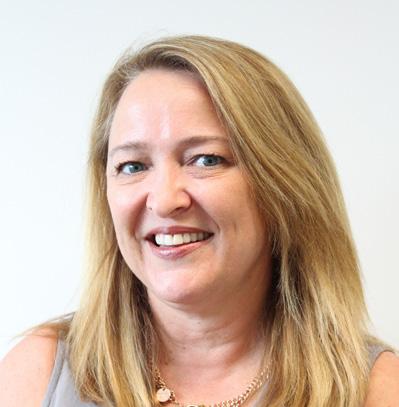
Has it really been 15 years since I signed my first of five three-year contracts as a VMO fee-for-service orthopaedic surgeon with ACT Health? Since 2009, my time has been consumed with both general tertiary level one orthopaedic trauma as well as subspeciality upper limb elective surgery. The department grew over the years to become one of the most collegiate and interactive orthopaedic departments I’ve seen – and I’ve seen many. As inaugural National Chair of Accreditation for Australian Orthopaedic Association surgery training I’ve seen all the public hospital departments nationally. At CHS, our departmental mix of all VMOs was unique. We were one of the most cohesive and synergistic groups of like-minded surgeons. Resigning from CHS was not something I thought I would ever do. My plan was to continue to be active in the department and to mentor the new team of surgeons that we hoped to recruit over the next few years. Succession planning had allowed the department to maintain a high level of service over the years, and I had been invited by the Head of Department to undertake a handover – making me the new Head of Department. That plan has now dissolved and the unit has publicly disintegrated, with three of the department resigning in frustration, and the remaining surgeons evaluating whether they will stay once their current contracts expire over the next two years. One of my regrets in resigning is leaving behind more than 75

patients on my elective waitlist, and many patients who are yet to be seen in my upper limb outpatient clinic. I have no information about what has happened to those patients. What’s more, as I was the most senior trauma upper limb surgeon, I wonder what will happen to the existing trainees and fellows now that my teaching capacity has evaporated.
I regularly took on patients from Wagga, Goulburn, Cooma and Bega, on direct referral from other orthopaedic surgeons who were unable to offer care based on their location and skill set. CHS is now actively blocking these referrals, I’m told – wanting CHS to only see ACT patients. Now those remote surgeons will need to decide where in NSW they will send their uninsured complex shoulder patients.
I am disappointed that my contribution to CHS has been downplayed to being minimal by Minister Rachel Stephen-Smith in media interviews. I have been a very active surgeon in the field of training and education, and have been part of the team who developed and implemented the new Orthopaedic AOA21 training program – with a move from time-based surgical training to a more individualised and accessible competencybased training program.
As one of the 5% of female orthopaedic surgeons in Australia (it was <3% when I started), and one of the few who continued to work in the public system doing general orthopaedic trauma, my role was to also be
an example to junior female doctors to show that you can be a female surgeon, even in orthopaedics. I championed the room in theatres which met the breastfeeding guidelines for our doctors (warning: don’t drink the unlabelled milk container in the ortho office fridge!). I was instrumental in implementing the ortho roster to meet national safe working hours guidelines, and regularly juggled to ensure all the needs of our trainees and fellows were being met.
Adjusting the roster to minimise unrostered overtime, ensuring fair and equitable access to leave, and advocating for those who were struggling was first in mind—all of this non-surgical work was done out of hours.
The whole health system has been subjected to massive hurdles over the years, from Covid, to the Calvary fires to the Digital Health Record. As if these weren’t enough, then
there was the move to the new building. To experience first-hand the poorly efficient new theatres was embarrassing. The lack of equipment, the lack of space and staff to manage the simplest of actions like sterilising trays and equipment, and the significant time delays just trying to get a patient to the theatre complex from the ward was taxing. But, we all tried to continue to push for efficiency in the best interest of the patients.
As an active surgeon faced with these challenges, to then be told our contracts wouldn’t be renewed, and that we would only be offered sessional rates or salaried positions …this was one step too far for me. It’s not about the money; it’s about being valued and appreciated for what we do.
I will miss the ambience of a trauma theatre – from the in-charge theatre nurse, to the Operating Room Coordinator, to the nursing staff, radiographers, wardies, cleaners and especially the registrars. It has been an absolute privilege to be involved in the cultivation of our next cohort of specialists, and they will always remain in my heart. To be invited into their lives – both good and bad, and to have the role of “mother hen” for relationship issues, baby issues,
Continued on page 5
New Collection Centres now open
We are excited to announce the opening of our two newest collection centres.
Gungahlin Marketplace
Shops 27-28, Ground Floor
Open Mon-Fri 7am-6pm Sat 7.30am to 1.30pm
Casey Shop 1, Casey Market Town Open Mon-Fri 7am-3pm
Appointments available all day. Patients can visit capitalpath.com.au/appointments to make an appointment.

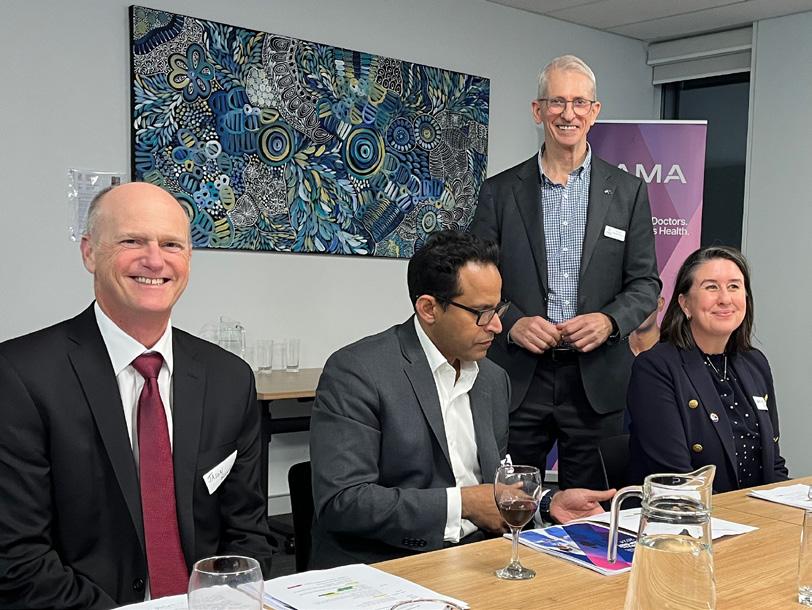
AMA ACT members
joined president Dr Kerrie Aust and the AMA ACT board for the Annual General Meeting at AMA Federal offices in Barton on May 28. Dr Aust thanked members for the enormous joy and privilege of representing them and reflected on the many ways AMA ACT fought on their behalf throughout 2024. This included effective advocacy in the lead-up to the 2024 ACT election, which led to significant election promises in support of territory doctors. It also included the huge amount of work and expense involved in taking the fight for fair pay and conditions for ACT’s salaried public hospital doctors to the
A/Prof Rashmi Sharma wins President’s Award
Associate Professor Rashmi Sharma OAM is a distinguished general practitioner, educator, and health advocate whose long-standing commitment to medicine has left an indelible mark on general practice in the ACT.
A/Prof Sharma has served on multiple advisory groups, taskforces, and committees, including at the national level, where she has contributed to reforms in primary care policy, standards and funding models. Her contributions have been especially valuable in areas such as quality improvement, digital health integration

Fair Work Commission.
“Legal fees have been high, but we are confident this was the right decision and will deliver better outcomes for ACT doctors and the broader health system,” Dr Aust said. Also joining the meeting were the chair of the Federal AMA board, Dr Andrew Miller and secretary general of the Federal AMA, Natalia Centellas, who reinforced the close connections between the federal body and AMA ACT.
The evening saw two longserving members awarded special honours. Associate Professor Rashmi Sharma OAM received the President’s Award for her significant contribution to the Association and to the profession in the ACT (see box).

and access to care for vulnerable communities.
Locally, A/Prof Sharma has been a steadfast supporter of AMA ACT, generously giving her time and expertise to support advocacy efforts and represent the voice of general practice. She has mentored countless junior doctors and medical students and has been instrumental in bridging the gap between grassroots practitioners and policy-makers.

Professor Peter Warfe DSC was presented with his certificate for Life Membership, having joined the AMA in 1974. To read more about Professor Warfe’s outstanding achievements see page 5
The AGM marked Dr Jason Gluch’s first report as treasurer, having stepped into the big shoes of Dr Andrew Miller who served in the role for a decade. Unfortunately, 2024 has been a difficult year for AMA ACT financially, Dr Gluch explained, with the company recording a deficit of around $70,000. While this result is disappointing, Dr Gluch showed it is consistent with a pattern of deficits in recent years and was significantly affected by the very substantial legal fees AMA incurred as a result of the Full Bench hearing before the Fair Work Commission.
The board remains committed to returning AMA ACT to a position of financial sustainability. As part of this commitment, the board has commenced a consultation process with members on a proposal to transition AMA ACT to become a branch of the Federal AMA.
“This proposal reflects both the challenges of operating independently in a constrained environment and the opportunities that closer integration may offer in terms of scale and stability,” Dr Gluch said. The proposal aims to preserve AMA ACT’s identity – including its name, branding and leadership— while shedding the back-office burdens that are draining time, energy and finances. Under the proposal AMA ACT would keep a local President, President-Elect, and Council. Member benefits, Industrial Relations support and events would also continue unchanged. However, staff would be
employed by the Federal AMA, and AMA ACT’s financial and legal responsibilities would be absorbed by them. Governance would shift from a company board to a branch committee, reducing liability and compliance risk for directors. The Federal AMA would manage corporate services like HR, IT, legal and finance.
Dr Kerrie Aust commented:
“We believe this change will allow us to focus on what our members care about—advocacy, representation, and services.”
“We’ve seen this work in Tasmania, where they have retained local control and improved their services.”
The AGM kicked off a period of member consultation on the proposal to make AMA ACT a branch of the Federal AMA. Several members in the room expressed support for expenditure on the Fair Work Commission action, and sought assurances that if a restructure went ahead, the organisation would have support to take similar actions in future if necessary. While the representatives from Federal AMA were not able to speak to specifics, they provided examples where Federal AMA has chosen to invest in legal matters for the good of the profession. In July, AMA ACT will host inperson and online forums for Q&A and discussion on the transition proposal. This will be followed by a straw poll to gauge sentiment in August. If there’s strong support, there will be a formal vote at an Extraordinary General Meeting later in 2025. To approve the transition, at least 75% of votes cast will need to approve the transition. AMA ACT wants to hear from members on the transition proposal. To share your views, please contact ceo@ama-act.com.au
A potential buyer is in advanced discussions with administrators to take over Tuggeranong’s bulk-billing medical practice Interchange Health Co-operative.
Interchange – which has approximately 5000 patients on its books and is a major provider of Opioid Maintenance Therapy in Canberra – entered voluntary administration under RSM Australia on April 7.
The practice has since re-opened under a temporary licence agreement with a private operator, ForHealth, which runs medical and dental practices across Australia, including Ginninderra Medical and Dental Centre and Phillip Medical and Dental Centre.
Mark Buckley, ForHealth’s director of NSW/ACT confirmed the company is keen to buy the practice, subject to final diligence.
“Our mission at ForHealth is to provide accessible healthcare to everyone in the community, and we are excited about the opportunity to build a bulk billing medical practice for the Tuggeranong community.
“We sincerely thank all parties for their collaboration throughout this transition period, which has been essential in restoring vital services for patients. We would also like to extend our gratitude to the Capital Health Network for their support during this time.”
RSM Australia will present their final recommendations on the future of the company to creditors at a meeting on or before Friday, 25 July 2025.
Before winning May’s Federal election, Labor promised to invest $3.8 million into the practice’s running over the next three years. The funding is contingent on the provider maintaining operations for at least three years and the practice remaining 100 per cent bulk billed during that time.
Interchange patients have been contacted directly with information regarding the return of services at the practice. Same day appointments are available.


It’s taken thirty years, but AMA ACT member
Professor (Colonel)
Peter Warfe was recently recognised with a Distinguished Service Cross for his outstanding leadership of Australian peacekeeping forces in Rwanda following the 1994 genocide.
Dr Warfe (now Professor) commanded a contingent of 320 Australian personnel as part of the United Nations Peacekeeping Mission in Rwanda between February and August 1995. He was also senior medical officer for the 6500-strong UN Mission to Rwanda.
Professor Warfe has previously been recognised with a Conspicuous Service Cross for his leadership in Rwanda, an honour reserved for non-warlike operations. However, as the true nature of atrocities witnessed by those who served in Rwanda has come to light, the operation has been reclassified as “warlike”, and Professor Warfe has thus been recognised with an award of greater honour.
“Because of the privation and the horror of the place, a lot of our service people suffered very badly,” Professor Warfe told Canberra Doctor. “A number of personnel suffered with post-traumatic stress disorder as a result, at rates similar to US servicemen from the Vietnam War.”
In an extensive interview recorded in 2004 and available online through the Australians at War Film Archive, Dr Warfe described the extreme violence of the mission, including witnessing the dreadful Kibeho massacre in
April 1995 in which an estimated 4,000 people were killed.
“At the end of it, there was a dispute about how many people had been killed, but we counted –one of my warrant officers counted physically, with a counter, over four thousand bodies. And we evacuated three hundred people that day to a hospital nearby. About a third with gunshot wounds, a third with machete wounds, a third with gunshot and machete wounds,” he said in the recording.
Speaking today, Professor Warfe said Australia’s presence contributed to the morale of peacekeeping forces and the Rwandan people.
“The place was wrecked when we arrived. There was no power, water, police, traffic control, food distribution, hygiene, anything. Our role was to put that back together from a public health point of view to support the UN forces, but also we were providing about a third of the health care in Rwanda because the Rwandan healthcare facilities had been destroyed, with most of the staff having been killed or disappeared.”
“The people were very grateful
to be able to access medical, nursing and surgical care, and were confident in our ability to control disease, and get them safe drinking water and get rid of garbage.”
Professor Warfe joined the army after completing medical school, having received an army undergraduate scholarship. Over time he took responsibility for increasingly large medical units until he was eventually put in charge of all Australia's land army medical units.
The Australian War Memorial has published many of Professor Warfe’s papers from his time in Rwanda on its website, including affectionate letters from his wife and children. In one letter, his daughter reports that “Raiders beat P’Matta 50-12. Laurie Daley was man of the match”. Since his retirement from the defence force in 1999, Professor Warfe has held several significant positions as a public health physician in Canberra, including until recently chairing the ACT Medical Board.
Professor Warfe became an AMA member in 1974 and is now a life member.
Colonel
Peter George
For distinguished command and leadership in warlike operations as the Commander, Australian Contingent to the United Nations Peacekeeping Mission in Rwanda from February to August 1995.
Colonel Warfe’s leadership as Commander Australian Contingent of the United Nations Peacekeeping Mission in Rwanda was remarkable. His leadership qualities ensured a
‘Resigning was not something I thought I would ever do’
Continued from page 3
career advice, travel advice, rotation advice and other advice for life-skills is something I relished, and usually instigated over the “chocolate basket” that sat pride of place in the ortho office.
I will miss hosting the biannual welcome BBQ drinks, held on the back deck of my home on a Sunday afternoon…It was a unique and well-received way for the surgeons to meet the new registrars before the term starts, and hubby Geoff and my kids loved “checking out” the new team. I will miss caring for my patients. There has been sadness with poor outcomes, and happiness with good outcomes. I have been humbled by complications in cases where I thought I did the best, and have learned from my mistakes. I have always been open to criticism and each complication has scarred me. I have cried with family after the death of their loved ones, and I have happily cared for multiple family members over the years. I am grateful for the trust that patients put in me. What I won’t miss is the continual and ever-increasing interference by executive in my capacity to offer timely care for my patients. If I assess a patient and believe that they should be offered elective
surgery within 3 months, then that is their category. That is my role as the surgeon – don’t change the category because the name of the operation doesn’t fit the national guidelines. I treat all patients as individuals.
My resignation was not an easy choice. I am not retiring, despite what has been incorrectly stated in the media. I am at the peak of my surgical expertise, but that skill is now only available to those able to access the private system. The loss is being felt by those currently in the public system and those waiting to see an upper limb orthopaedic surgeon to manage their disabilities.
The sharp change in direction at CHS will change forever the orthopaedic department, and all other departments who still have VMOs. The VMO will soon be an extinct breed, with irreversible loss to the most important people in CHS – the patients. So, goodbye to all my friends and colleagues at CHS, I will miss all of you.
To Rachel Stephen-Smith, I offer the words of Joni Mitchell: “Don’t it always seem to go, that you don’t know what you’ve got til it’s gone.”
At TMS ACT, our clinic specialises in treating refractory depression. We offer Transcranial Magnetic Stimulation (TMS), a cutting-edge therapy now covered under the Medical Benefits Scheme. Eligible patients can receive a substantial rebate for this treatment. Additionally, we are a registered Spravato (Esketamine) clinic and have expanded our services to offfer this treatment.
We welcome new referrals, and for those seeking the Medicare rebate for TMS, patients must meet the following criteria for Treatment Resistant Depression:
high level of medical service was achieved despite at times hostile conditions. He was instrumental in the planning, formation, and implementation of a new United Nations Mandate for Rwanda and liaising with the Rwandan Government to ensure the success of the new Mandate. From the Gazette of the Govenor-General of the Commonwealth of Australia.


Have failed to respond to an adequate trial of two or more antidepressants (of different classes) unless contra-indicated

Have also undertaken psychological therapy unless inappropriate
Referrals for an initial assessment can be sent to Dr John Saboisky or Dr May Matias via our website or by email.

If you could wave your magic wand to fix one aspect of our health system, what would you do? Imagine for a moment there are no real-world constraints –no buck-passing between the territory and federal governments, no legal barriers in the Health Insurance Act. What would you do to save general practices on the brink of collapse, or to repair the cost blowout in the public system?
This edition of Canberra Doctor, two leading Canberra GPs and practice owners, Dr Paresh Dawda and Dr Andrew Palfreman are waving their wands and sharing their bold ideas to address some of the challenges they see every day in clinical practice. Their ideas will not be popular with everyone, but they are bravely putting them forward, because safe solutions will not fix Wicked Problems.
Wicked Problems are resistant to solutions because their sheer complexity makes it extremely difficult to reach agreement on where to start. These problems require fresh thinking and fearless collaboration. They require Wicked Solutions.
Do you have a Wicked Solution?
Canberra Doctor is seeking reader contributions to include in our next edition. We want to hear your Wicked Solutions to the Wicked Problems you see in our health system. No idea is off limits.
The writer of the most thoughtprovoking Wicked Solution as judged by the AMA ACT board will receive a $200 Escape Rooms Canberra voucher (because without a magic wand to solve these Wicked Problems, the best thing to do may be to escape!).
Disclaimer: The AMA does not endorse any of the views that are put forward as part of this feature.
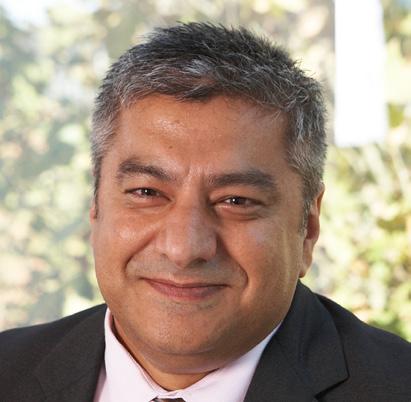
DR PARESH
DAWDA GP and Director, Next Practice Deakin and Prestantia Health
The ACT health system reflects the broader structural divides entrenched in Australia’s federated model. Primary care, delivered mainly by GPs, is funded through the federally administered Medicare Benefits Schedule (MBS). Pharmaceuticals are subsidised via the Pharmaceutical Benefits Scheme (PBS). In contrast, hospital and community health services are funded and managed by the ACT Government, which is also responsible for public health, ambulance services, and some components of mental health and aged care. This disconnected system results in poor continuity of care, avoidable hospital admissions and wasteful resource use. Other parts of the system, including private care, the National Disability Insurance Scheme and Aged Care compound these complexities through further fragmentation of funding, regulation and workforce.
This wicked problem is not unique to the ACT. Several international health systems have addressed fragmentation through vertical integration—aligning governance, funding, service delivery and information systems under a single organisational or strategic structure.
With a bold vision, a clear set of first steps and a commitment to genuine collaboration, the ACT can become a model of what’s possible in health system reform in Australia—not through building more of the same, but by doing things differently.
Given the relatively greater control and funding power that the territory government has over hospitals, infrastructure, and service delivery (compared to general practice and federally governed MBS services), the ACT should adopt a bold constraint to compel innovation: No new hospitals. No new beds. This radical limitation will force the system to invest in smarter, more connected, and valuebased solutions—integrating care in the community, empowering multidisciplinary teams, and leveraging digital health and prevention. It’s not about spending less, but spending differently— toward value, not volume. Taking an adaptive approach, with our constraint to stimulate creativity and reimagination,


WIN a $200 Escape Rooms Canberra voucher

we may be able to determine a single vision across the entire health system: One ACT Health and Care System, One Budget, One Purpose — Better Outcomes for Every Person.
This vision would require radical funding reforms. This would include:
Dismantling the MBS, PBS and state funding silos for the ACT and pooling all healthrelated funds (including aged care, NDIS, mental health)
Creating an ACT Health and Care Fund jointly managed by ACT and Commonwealth governments
Commissioning services through capitated populationbased funding and bundled payments tied to outcomes
It would also require a new integrated governance model, creating a single ACT Health and Care Authority with responsibilities for integrated service planning, value-based health care commissioning, digital health infrastructure and outcomes monitoring.
While a full-scale transformation to a vertically integrated, valuebased health system is ambitious, the ACT could act immediately to create momentum and build the foundations for reform through the following steps.

1. Establish a ‘One ACT Health and Care Budget’ pilot for a local population
Select a defined local population—e.g., people aged 75+ in Tuggeranong or Gungahlin with high use of hospital, primary care and aged care services
Pool funding across ACT Health, Commonwealth primary care (MBS), aged care packages and mental health supports for that cohort
Commission an integrated service provider network to deliver joined-up care with a focus on outcomes such as reduced ED/ hospital admissions and increased time at home
2. Launch a ‘Value in Primary Care’ Innovation Fund
Establish a modest but targeted Innovation fund to support general practices and community organisations in trialling value-based aligned models, such as: Team-based care for
chronic disease
Patient-reported outcome measures integrated into care planning
Bundled payments for diabetes, asthma, heart failure, etc.
Provide grants for codesign, implementation, and evaluation, with emphasis on underserved groups and health equity
3. Mandate a Shared Outcomes Framework across Health, Aged Care and Disability
Co-design a core outcomes framework with consumers, clinicians, carers, aged care and disability providers
Include patient-reported outcome and experience measures, quality of life, function and avoidable hospitalisation rates
Embed these into existing contracts, service level agreements and ACT Health reporting

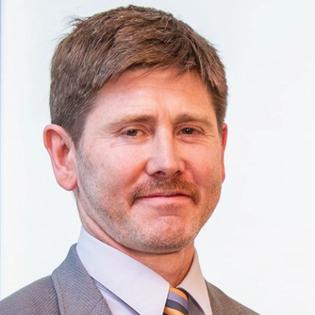
DR ANDREW PALFREMAN GP, Owner Watson General Practice
Wicked Problem:
The recent panic caused by the (temporary) closure of Interchange Health Co-Op has shown up the chronic underinvestment in General Practice and problems with market failure. A clear example is the provision of opiate maintenance treatment (OMT), the burden of which is carried by a small cohort of GPs who accept a pay cut to do this work. Governments need to properly support the most marginalised in society rather than the smoke and mirrors of offering bulk-billing incentives for everyone or Urgent Care Clinics that cannot do this work.

Like the women’s health MBS item numbers, of merit would be a new MBS item number or numbers for OMT and/or blood borne virus (BBV) consultations, which should be co-billable with other items (such as 23 or 36) used for more mainstream issues. A new OMT item number would direct extra resources to marginalised populations and effectively make them more valuable to be taken on as patients. It would encourage more GPs to upskill on OMT as they could afford to take care of these patients in a mainstream practice setting. It would significantly obviate the risk of patients on OMT becoming stranded if/when places such as Interchange fail. GP billings would be easily
verifiable against PBS data on methadone or buprenorphine prescriptions to ensure compliance. A BBV item number would also provide additional on-the-ground data to the Department of Health to help with goals such as the eradication of Hepatitis C by 2030.
If there is no appetite Federally to make changes to the MBS, the ACT Government could intervene with caring for patients on OMT. This could happen easily with a voucher system for OMT patients to supplement their GP care, or a top-up payment to GPs or practices that is made quarterly and dependent on the number of patients on OMT for whom the GP or practice prescribes.
A new mandatory reporting requirement has come into force on 12 June 2025 for ACT health practitioners registered in the medical, occupational therapy, physiotherapy, optometry and psychology professions.

You must report to Access Canberra if you:
examine or assess a person who you reasonably believe holds a heavy vehicle licence or is applying for one; and
form an opinion that the person has a permanent or long-term illness, injury or incapacity that is likely to impair their ability to drive a heavy vehicle safely, even if the person hasn’t been formally diagnosed.
What must I do?
You must make the report in writing within 7 days, using a smartform on the Access Canberra website. The form is available on the Access Canberra website under Medical conditions and fitness to drive page. Take all reasonable steps to notify the person about the requirement and the content of the report as soon as possible.
What happens next?
Reports will be assessed by Access Canberra as part of the standard fitness to drive framework, which may result in the person being referred for further assessment, changes to their heavy vehicle licence, or no action being taken.
Where can I find more information?
For more information on the mandatory reporting requirement visit the ACT City Services website page Reporting fitness to drive For more information visit accesscanberra.act.gov.au
Dany Duong, PhD Candidate at the University of Canberra (UC), is conducting academic research into cybersecurity and Australian medical clinics within the greater ACT region.
Dany’s research aims to:
1. capture a baseline understanding of the cybersecurity awareness and process of Australian medical clinics;
2. identify barriers/ obstacles to adopting secure cybersecurity practice;
3. analyse our sector’s cyber risk profile;
4. explore opportunities for clinics to adopt more secure cybersecurity practices to assure secure and confidential patient information in the cyber space; and
5. investigate a tailored cybersecurity framework for medical clinics to improve data protection.

All GPs and staff (current and former) of medical practices within the greater ACT region, are cordially invited and encouraged to participate by completing the research survey. The research has received UC Ethics approval HREC14173.
By completing the survey, participants also get the chance to win 1 of 5 prizes!
Draw prizes are:
1 x $100 Gold Class movie voucher; 2 x $50 gift cards; and, 2 x $50 chocolates gifts.
Survey URL: bit.ly/43TUPYg Or, scan the QR code:


AMA ACT President
Dr Kerrie Aust has praised
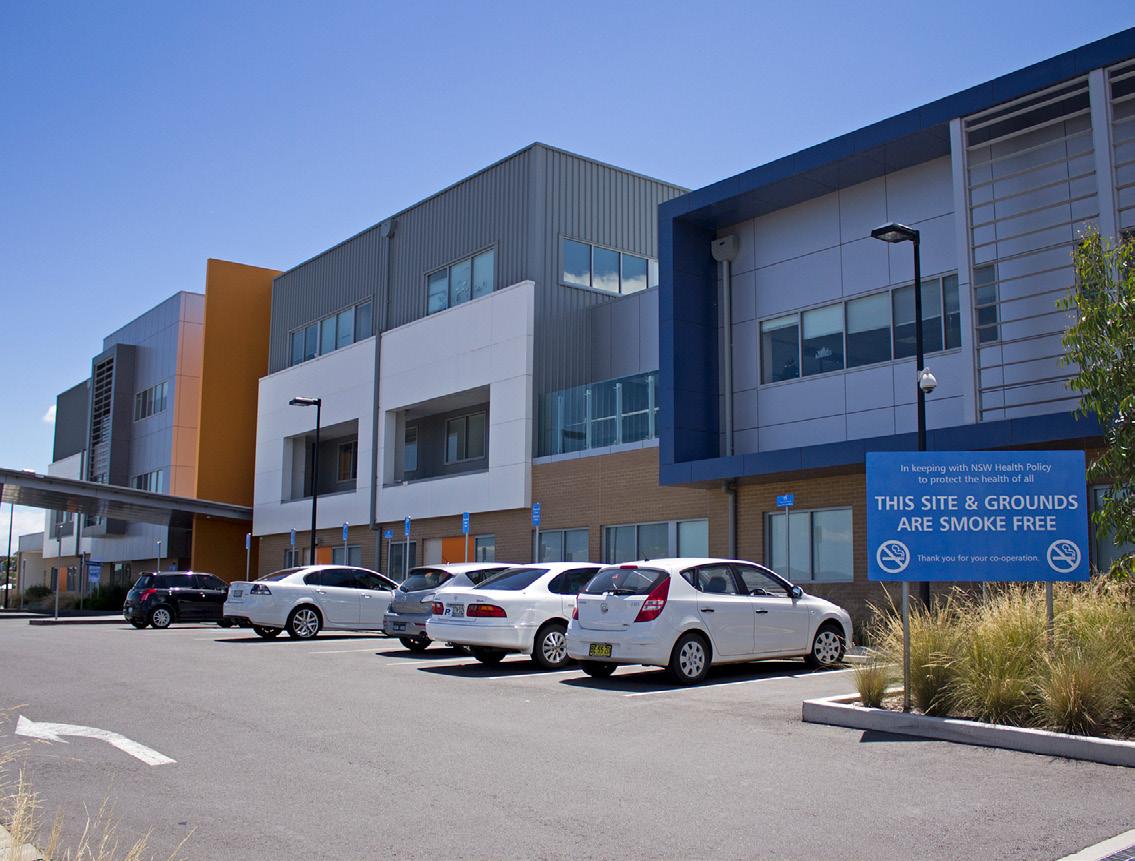
A controversial new registration pathway that processes must have the support of the relevant Medical Colleges to ensure safety and quality.”


streamlining processes may partly
health workforce planning agency.” Medical Board of Australia Chair, Dr Susan O’Dwyer, said patient safety and medical workforce supply were

any medical specialist in Australia and be able to get an appointment make this happen,” Dr O’Dwyer said.

By Doctors’ Health Fund
Health insurance is a cornerstone of financial security and peace of mind for millions of Australians. It ensures access to quality healthcare services without the burden of exorbitant out-of-pocket costs. However, one common concern among policyholders is the steady increase in health insurance premiums over time. While it may seem like insurers are arbitrarily hiking prices, there are legitimate reasons behind these changes. Let’s break down some of the primary drivers:
One of the most significant contributors to increasing premiums is the escalating cost of medical care itself. Advances in medical technology, pharmaceuticals, and treatments have revolutionised healthcare – but they come at a price. Cutting-edge procedures such as robotic surgeries, advanced diagnostic tools and new medications often require substantial investment. Hospitals and clinics pass these costs on to insurers, who then adjust their premiums accordingly.
Doctors’ Health Fund understands that while innovation saves lives, it also impacts affordability. That’s why we work closely with our network of healthcare providers to negotiate fair rates and ensure our members receive value for money without compromising on quality. Over the last decade, Doctors’ Health Fund has consistently kept premium increases below industry averages¹.
2.
Australia’s aging population plays a major role in the growing demand for healthcare services. As people live longer, they tend to require more frequent medical attention, including specialist consultations, hospital stays and chronic disease management. This increased utilisation places pressure on the healthcare system and contributes to higher overall costs. Additionally, lifestyle-related illnesses such as obesity, diabetes and heart disease are becoming more prevalent. These conditions often necessitate ongoing treatment and specialised care, further straining resources. At Doctors’ Health Fund, we support medically-evidenced treatments and don't pay benefits for non-proven therapies.
3. Government policies and rebates
The Australian government provides a rebate on private health insurance premiums to make coverage more affordable. However, the rebate percentage is indexed annually based on inflation, which means it doesn’t always keep pace with rising premiums. As a result, policyholders may see their out-of-pocket expenses increase even if the insurer hasn’t raised its base rates significantly.
Unfortunately, fraudulent claims and administrative inefficiencies also contribute to rising premiums. Insurers must invest in robust fraud detection systems and maintain large customer service teams to handle inquiries and process claims. While these measures are necessary to protect both the insurer and its members, they add to operational expenses. At Doctors’ Health Fund, we pride ourselves on efficient administration and ethical practices.
5. Natural disasters and unforeseen events
Unpredictable events such as pandemics, natural disasters or economic downturns can disrupt the healthcare landscape and lead to unexpected spikes in claims. For example, during the COVID-19 pandemic, many insurers faced increased demand for mental health services, telehealth consultations and elective surgeries delayed due to lockdowns.
How can you manage rising premiums?
While some factors contributing to premium increases are beyond your control, there are steps you can take to manage your health insurance costs effectively:
1. Review your policy regularly: Ensure your level of cover aligns with your current needs. If you no longer require extras like dental or optical, consider switching to a hospitalonly policy or downgrade to save money.
2. Take advantage of discounts: Many insurers, including Doctors’ Health Fund, offer discounts for paying annually, holding combined policies (e.g., hospital + extras), or being part of a loyalty program.
3. Optimise tax benefits: Make use of the government rebate (e.g., Lifetime Health Cover or Youth discount) and any available tax deductions related to medical expenses.
4. Choose wisely when selecting extras: Focus on benefits that truly matter to you, such as physiotherapy or psychology care, rather than opting for comprehensive policy with unnecessary inclusions or junk policy that doesn’t offer any real benefits.
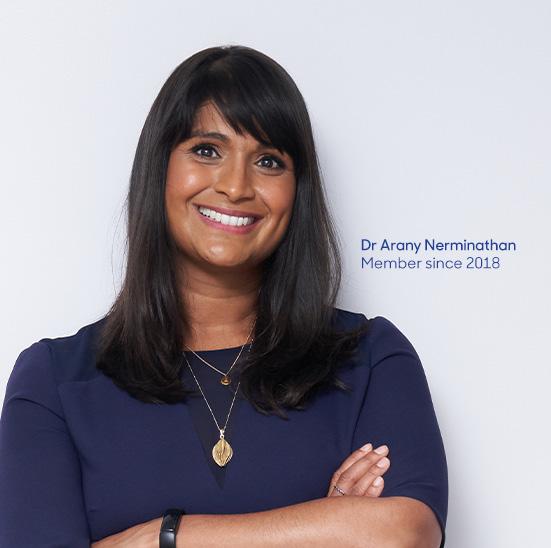
Doctors’ Health Fund is the only health fund made for doctors, their families and the medical community. We provide our members with quality health cover that provides great value and prioritises member welfare above profit margins. Here’s what sets us apart:
Competitive pricing: Our commitment to affordability ensures that our premiums remain competitive without sacrificing quality.
Tailored coverage options: Whether you need hospital cover or an extensive package with extras, we offer flexible plans designed to suit diverse needs.
Strong provider networks: With agreements in place across Australia’s leading hospitals and specialists, we provide seamless access to top-tier care. Plus, with no restrictive preferred provider networks, you’re free to choose your preferred extras provider, offering you greater choice and convenience.
Member-centric approach: From personalised service to cover that pays up to the AMA list of medical services and fees, we go the extra mile to support our members’ wellbeing.
Industry leading gap cover: We cover more medical services with no gap than any other health fund, with 93% of medical services covered compared to an industry average of 87.7%².
Part of the Members Health Fund Alliance: A memberowned organisation, we are owned by doctors, not public shareholders. Any profits are reinvested to benefit our members and the community.
To find out more, please contact Doctors’ Health Fund’s friendly and knowledgeable sales team by emailing join@doctorshealthfund.com.au or calling 1800 226 126.


GABRIELLE SULLIVAN
Sullivans Legal Co
What exactly the ‘working hours’ are for any particular medical practitioner will depend on a range of regulatory instruments, including the Fair Work Act, any applicable Award or Enterprise Agreement, and their contract of employment. 38 hours per week is a good starting point (we’ll talk in a later article about the circumstances where an employer can set up ‘reasonable additional hours’ beyond 38 as part of the ordinary working hours).
This article is about the right to disconnect outside of those ordinary working hours.
Here it is in a nutshell:
Australia’s new right to disconnect laws allow employed doctors in the ACT to refuse to monitor, read or respond to workrelated contact outside their ordinary working hours.
The right is subject to a reasonableness test, with special considerations for on-call, recall and emergency roster change arrangements.
Employers should review rostering, contracts and communication practices to ensure compliance, but the right to disconnect ultimately empowers employees to choose when to exercise it.
From 26 August 2024, most Australian employees – including doctors – gained a new workplace right: the right to disconnect from work outside working hours. This change was introduced
Work-life balance is hard to achieve. For those who’ve pledged the Hippocratic oath, it’s even harder. Add in today’s technological ease of contact at any time of day or night, and conditions are ripe for overwork and psycho-social burnout. But times are changing, and Australia’s labour and Work Health and Safety laws that apply across the country (and to all industries) are slowly but steadily limiting legitimate contact out of working hours.
by the Fair Work Legislation Amendment (Closing Loopholes No. 2) Act 2024 and the Medical Practitioners Award 2020. For small business employers (fewer than 15 employees), the laws commence from 26 August 2025.
Right to disconnect provisions
The right provides that an employee may refuse to monitor, read, or respond to contact –or attempted contact – from their employer or third parties (such as patients or other clinicians) outside the employee’s working hours, unless that refusal is unreasonable.
Key points:
The right applies to employees, not independent contractors, sole traders, or volunteers.
The right applies regardless of whether the employee works in the public or private sector, provided they are within the national workplace relations system. Some state public hospital doctors (outside ACT, NT and Vic) may not be covered, but all ACT is.
The right does not actually prevent employers or others from contacting their employees; it protects employees who reasonably choose not to respond outside their working hours.
Disconnection not to be unreasonable
The right to disconnect is not absolute. An employee’s refusal to respond must not be unreasonable.

The Fair Work Act sets out a range of factors to determine reasonableness, including:
The reason for the contact (e.g., clinical urgency vs. routine administrative matters);
How the contact is made and how disruptive it is (e.g., a midnight phone call vs. a non-urgent email);
Whether the employee is compensated for being available or for working extra hours (such as oncall or recall allowances);
The employee’s role and level of responsibility;
The employee’s personal circumstances, including family or caring responsibilities.
So for example, a doctor who is not rostered on, not on-call, and not compensated for after-hours availability may reasonably refuse to respond to a non-urgent query. Conversely, a doctor who is on-call and paid accordingly is unlikely to be able to refuse contact during that period. Indeed, the Medical Practitioner’s Award expressly states that an employer is not prevented from contacting an on-call employee to notify them they are required to attend or perform work, to notify them of an emergency roster change, or to recall them. While so much is obvious, we await case law development to see how the right is applied to more intriguing middle-ground scenarios.
Exercising the right to disconnect is now a protected workplace right. Employers must not take adverse action – such as dismissal, demotion, or disciplinary measures –against an employee because they have reasonably refused after-hours contact. Any such action may expose employers to claims under the general protections provisions of the Fair Work Act. If disputes arise and cannot be resolved at the workplace level, either party may also apply to the Fair Work Commission (FWC) for ‘Stop Orders’. Complaining to WorkSafe ACT may provide a separate avenue of redress.
Employers in healthcare should:
Review and update employment contracts, policies, and rosters to align with the new laws;
Clearly define working hours, on-call periods, and compensation for after-hours availability;
Communicate openly with staff about expectations for afterhours contact, including what is considered urgent or routine;
Train managers to understand and respect the right to disconnect and Work Health and Safety psychosocial safety demands, and to handle requests or disputes appropriately;
Ensure that performance management and disciplinary processes do not penalise employees for reasonably exercising their right to disconnect.
Conclusion
The ball is in the employee’s court: doctors can now set firmer boundaries, but must do so thoughtfully, balancing professional responsibilities with personal wellbeing. Employers, in turn, should foster a culture that respects these boundaries while ensuring patient care and clinical safety remain paramount. We await developments in this area with interest.
Gabrielle Sullivan is Managing Legal Practitioner and Director at Sullivans Legal Co, and a Law Society Accredited Specialist in Employment & Industrial Law www.sullivanslegal.com.au. Gabrielle acknowledges the assistance of Alistair Davidson in writing this article.



DR SANJAY HETTIGE

Healthcare”, addresses the challenges facing doctors today while highlighting the AMA’s essential advocacy and policy work as the peak professional body for all doctors.
As we approach the AMA25 Conference in Adelaide this August, I am delighted to extend a warm invitation to colleagues across all medical specialties to join us for what promises to be a landmark event in Australian healthcare.
The vision for AMA25 emerged from recognising the need for a truly inclusive forum where medical professionals from diverse backgrounds and specialisations could converge to share knowledge, challenge perspectives, and forge meaningful connections. In my role as Conference Convenor, I have had the privilege of witnessing this vision take shape through the dedicated efforts of our organising committee. What sets AMA25 apart is our commitment to breaking down traditional silos within the profession. Our theme, “Safeguarding Australia’s
The program runs Friday 1 to Sunday 3 August at the Hilton Adelaide, with two core conference days and an optional Sunday social programme. Delegates will enjoy thought-provoking sessions from industry and policy leaders, alongside valuable networking opportunities with colleagues from diverse backgrounds. We’ve secured exceptional keynote speakers including
Adelaide is bursting with culture, flavours, and entertainment. While you’re in town, take a moment to explore the best of what the city centre has to offer. Everything’s just a short walk or tram ride away!
Courtesy of the South Australian Tourism Commission

Discover the Adelaide Botanic Garden
A peaceful escape in the heart of the city, the gardens are perfect for a morning stroll or lunch break. Don’t miss the iconic Palm House or the Amazon Waterlily Pavilion.



Bar hop through the city’s laneways
Adelaide’s small bar scene punches well above its weight. Explore Leigh Street and Peel Street for hidden gems like Maybe Mae, Jennie Wine Bar and Pink Moon Saloon.
Dr James Muecke AM, Australian of the Year 2020, and Gill Hicks MBE AM, a powerful advocate for peace. The Saturday Gala Dinner, MC’d by Tim Campbell, promises to be a highlight — offering a chance to relax and celebrate with colleagues. I am particularly excited about our dedicated spaces for impromptu conversations and idea-sharing, which often yield the most valuable outcomes of such gatherings. The relationships formed at AMA25 have the potential to develop into lasting professional partnerships that transcend specialty boundaries.
As Convenor, my goal is to ensure that every delegate feels welcomed and valued, regardless of career stage or specialty focus. The success of AMA25 will ultimately be measured not just by attendance figures, but by the energy and engagement generated throughout the event and its impact on our collective practice.
All medical
Chair, Council of Doctors in Training Visit qrco.de/ama25 or scan the QR code

Whether you have an hour or an afternoon free, Adelaide’s compact city centre offers plenty to see, do and taste.

Visit the Art Gallery and Museum
North Terrace is home to the Art Gallery of South Australia and the South Australian Museum. Perfect for a quiet wander or a cultural reset between conference sessions.


The scenic Riverbank Precinct offers a tranquil trail past the Festival Centre, Adelaide Oval and Botanic Garden. City bikes and e-scooters make it easy to explore on the go.

Climb the Adelaide Oval roof
For a hit of adrenaline and unbeatable views, the RoofClimb at Adelaide Oval is a unique way to see the city. Sunset climbs are especially spectacular!
professionals requiring CPD points, wanting to upskill, or seeking to connect with colleagues should attend. Registration includes the conference, Gala Dinner, and Welcome Reception.
I’m truly looking forward to seeing everyone in Adelaide and to hosting what I’m confident will be an inspiring and rewarding experience for all involved.
Dine like a local CBD favourites include Africola (African with flair), Fugazzi (New York-Italo), Shobosho (Japanese BBQ), Osteria Oggi (Italian) and Restaurant Botanic (Modern Australian Degustation) for a high-end experience.


One of the largest undercover fresh produce markets in the Southern Hemisphere, the Adelaide Central Market is packed with artisan cheeses, local wines, fresh produce and vibrant multicultural flavours.
Primary Health Care and Continuous Quality Improvement: An Evidence-Based Guide is a comprehensive and timely resource for those working to improve the quality, equity and effectiveness of primary health care (PHC). Drawing on two decades of leadership in Indigenous health and Continuos Quality Improvement (CQI) research, the authors provide practical tools, case studies and strategic frameworks to support quality improvement across a broad range of clinical and service areas—including maternal and child health, mental health and chronic disease.
The CQI approach to health care has been dominated by the hospital sector, where a relatively controlled environment and relatively routine models of care have some similarities with the industrial sector from which CQI evolved. Some of the recognised characteristics of CQI in this context include:
links to the organisation’s strategic plan
a quality council made up of the organisation’s top leadership
staff training
mechanisms for selecting improvement opportunities
the formation of process improvement teams
staff support for process analysis and redesign
policies that motivate and support staff participation in process improvement
rigorous techniques of the scientific method and statistical process control
client or consumer involvement in CQI
While these processes are feasible in medium-size or large hospitals, or for managing networks of community-based health services through centralised organisational structures, they do not reflect the way most PHC is delivered. CQI needs to be modified for application in PHC.
PHC services tend to be widely dispersed across diverse contexts and vary significantly in size. Some delivery models include multiple sites and a broad range of clinicians—such as nurses, doctors and health workers—while others may consist of just one clinician and limited administrative staff. Their composition also differs; services may operate as individual medical practices, groups of medical
and allied health professionals or community-based organisations. PHC services are governed through a mix of small business, corporate and government structures. Most operate with a high degree of independence or autonomy and rely on professional standards and accountability to ensure quality. Compared with hospitals and corporate networks, individual PHC services and practices are less likely to have a shared (or any) strategic plan that local staff can identify with, or a quality council to which most staff feel accountable. Where efforts to establish the aforementioned types of structures and processes have been made in PHC, the participation or engagement by individual PHC services and practices has varied greatly, with limited effect across the PHC service system or at a population level. Despite these challenges, strategic and systemic approaches to improvement are necessary for dealing with the complexity of PHC delivery and for improving care quality.
In PHC, items of service need to be delivered to members of the service population at relatively infrequent intervals, when people present for care. For example, blood pressure checks for generally healthy adults may be recommended once a year, or once every two years, as a preventive health strategy. Glycated haemoglobin (HbA1c) tests are recommended once every three or six months for people with diabetes. Care delivery for these service items relies on people accessing care for checks (or for acute care that may or may not be related) or being accessible through outreach services. The measurements need to be taken over a sufficiently long period (sometimes years) for changes in the level of care delivery to be observed. In addition, a very broad scope of
care is delivered through PHC: maternal, child and preventive health care; care and management of chronic conditions; mental health; sexual health and so on. Within each of these areas of PHC, there are essential items of care to be delivered in order to meet expected standards of care.
PHC teams and practices have the challenge of identifying which areas and which items of care should be the focus of their improvement efforts. This requires knowledge of what is being done relatively well and not so well by the service or practice, which in turn requires complete client records that accurately reflect the care delivered. Individual practitioners and teams also require knowledge about what is a reasonable level of care delivery in a population group: clear standards and measures of care quality established through quality assurance processes. While striving for 100 per cent delivery of “essential” care items is the ideal, it is rarely achievable, and is often much less than 100 per cent for a range of reasons. Teams need to prioritise improvements that are achievable and that offer the most benefit to clients. In addition, CQI requires comparable data from other PHC services and practices, to help benchmark quality of care. Local and regional variability in health care has long been known to exist, but there is a lack of evidence of this variability across PHC services on a wide scale and across the broad scope of clinical PHC. This is largely for reasons related to the diverse and dispersed nature of PHC services, and associated challenges in coordination, planning, delivery, monitoring and evaluation of PHC systems.

Substantial progress has been made in important areas, including the development, implementation and increased acceptability of clinical best-practice guidelines, the development of data systems that can support CQI and the use of “collaboratives” as a means of improving quality. Health practitioners and services have also embraced the concept of “client-centredness” to address the care needs and values of individual clients. Designing services that are appropriate and responsive to clients’ needs and the local context is especially important in PHC, to ensure easy and timely access to preventive care and treatment of health conditions throughout the life course. These PHC principles are strong motivators for staff to engage in CQI. PHC and CQI also have core concepts in common: both emphasise the importance of teamwork, and both PHC and CQI advocate systems approaches and systems thinking as a way of achieving better client outcomes. The integrated nature of PHC can extend the benefits of improvement interventions, because system changes targeting one group of clients frequently flow on to benefit other groups. For example, changes made to a clinical information system to generate automated reminders when child health checks are due can be used to schedule other items of care for other groups; skills developed to provide brief interventions for smoking have application for other behavioural health risk factors.
Consistent with the features of PHC delivery, CQI approaches need to allow practitioners and managers a high degree of autonomy to respond to local circumstances and population needs, and time to observe improvement.
Effective CQI in PHC has these characteristics:
use of adaptable tools and processes
use of clinical practice guidelines
preparedness to begin in at least some areas
use of local data and benchmarking
active management
“no blame” culture
leadership by primary healthcare teams and communities
participatory interpretation of data
design of interventions to suit local conditions
sharing of learning across teams
investment by the health service and region
This is an edited excerpt from Primary health care and continuous improvement: An evidence-based guide by Alison Laycock, Lynette O’Donoghue and Ross Bailie, published June 2025 by Sydney University Press, reprinted with permission. sydneyuniversitypress.com/ products/primary-health-care-andcontinuous-quality-improvement
When nurse Kathleen Cook started working at Canberra Hospital’s Intensive Care Unit two decades ago, she was surprised to find the hospital allowed personal pets to be brought in for visits.
“I hadn’t seen it done anywhere else,” Ms Cook says. However, before long Ms Cook was convinced of a profoundly positive “pet effect”. “As soon as a dog was brought into the unit patients and families would ask, ‘Could you please bring that dog over here?’. The dogs clearly lifted the mood and reduced the burden for patients and their carers.”
Dr Sumeet Rai, a senior intensivist at the hospital has also witnessed the same effect in his 15 years as a specialist. “All of us can tell you that when a dog walks in you can see the change in how happy it makes everyone in the unit.”
Dr Rai and Ms Cook have now given scientific weight to what they have long observed, through a study they have co-authored in the journal Critical Care Explorations Their study assessed the impact of a 15-minute session with a therapy dog on 70 patients and 71 family members at the ICU between 2019 and 2020. It concluded: “Canine assisted therapy (CAI) offers immediate therapeutic benefits in reducing anxiety symptoms in ICU patients and their family members, with no observed adverse effects.”
For patients, median anxiety scores decreased from 5/10 pre-intervention to 0/10 post intervention (p<0.001), demonstrating a large effect size. Over half of the patients exhibited greater than or equal to 2 points reduction in their anxiety scores. A significant reduction in anxiety scores was also observed among family members. Median (IQR) pain scores among the patient cohort were
also lower post-intervention (0 [0-5] vs 0 [0-2]; p<0.001).
The intervention was found to be safe, with no reported adverse events or new colonisation with multidrug-resistant organisms attributable to the intervention.
The authors said their findings were consistent with evidence extrapolated from CAI in paediatric settings. Dr Rai said it was also consistent with what has been observed with music therapy.
“Some of these complementary therapies do seem to reduce anxiety and pain. It’s not that they’re going to replace pain medications but they help support it, and may enable us to reduce the dose,” he said.
Canberra Hospital’s ICU has implemented a range of measures over the years to humanise the experience of patients and their families. These include therapy dogs, a visiting harp therapist and ‘Get to know me’ boards beside each patient’s bed, outlining who they are and what they like.
We’re trying to help patients feel more human, rather than just a patient in a bed. You can’t put a value on that
Dr Sumeet Rai
“We’re trying to help patients feel more human, rather than just a patient in a bed. You can’t put a value on that,” Dr Rai said. “When we know our patients a bit better as people, we can consider ways to distract them, to help them focus on feeling better.”
Despite the reduction in anxiety, canine-assisted therapy was not linked with any statistically significant changes in physiologic

vital signs such as heart rate, respiratory rate and systolic blood pressure in the study. Dr Rai said this could reflect the closely monitored environment of the ICU, where medicines are titrated if there is any change in blood pressure or heart rate. The study was limited by its nonrandomised design and self-reported measures, however the authors said it nonetheless provided valuable insights about feasibility, safety and effect sizes. Ms Cook said she hoped the research would encourage other units to facilitate visits from pets and therapy dogs. “I recently heard that a mother shared our team’s research with another hospital, and they agreed to bring a therapy dog in for her son. All the sudden the child wasn’t being viewed as his ‘disease’ but as a little boy enjoying a dog, and everybody was hovering around going ‘Wow, he looks so happy’.”
Dr Rai said the benefits on staff should also not be underestimated.
“Working in such a difficult environment as the ICU, if you can do something to improve the wellbeing of staff –happy staff, happy patients,” he said. “I can’t think of anything that lifts staff more than when the therapy dogs walk into the unit.”
The Canberra Hospital Foundation has provided funds to support the Delta Therapy Dog Program at Canberra Health Services since 2019, with contributions totalling just over $76,000.
Expert health care teams in each unit determine which patients can safely have a visit, and who would appreciate a pat or cuddle with the therapy dogs. All dogs are assessed by a veterinarian before they start their Delta assessment.
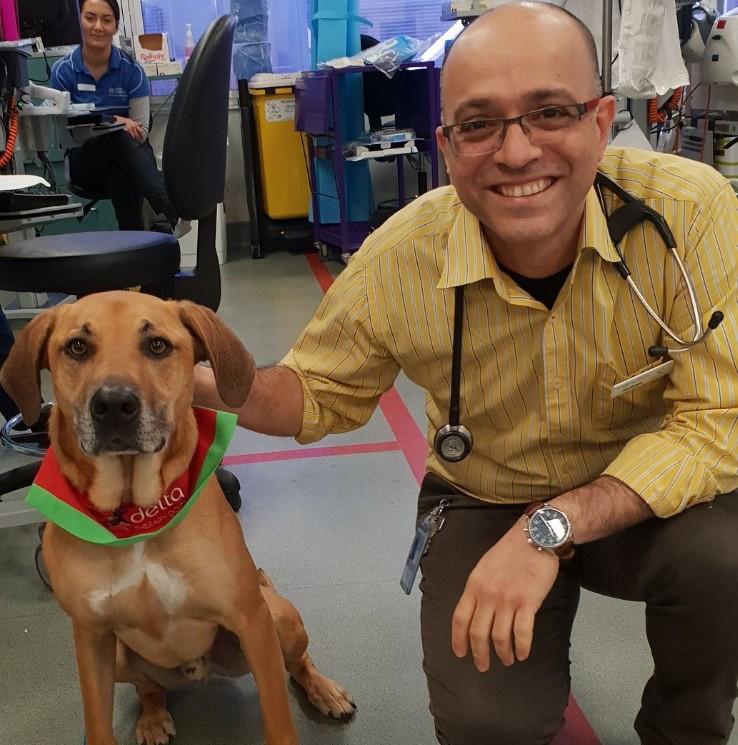

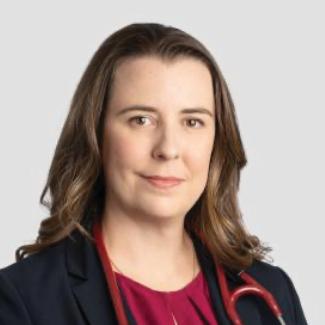
DR DANIELLE MCMULLEN AMA President
Elections are always a chance to highlight the critical issues facing our nation. This year, health took centre stage in the federal election campaign.
The major parties showed a real commitment to investing in the nation’s health system, particularly with historic funding announced for primary care.
We welcomed this focus — the quantum of funding that has been committed is what we need — but sadly, a significant proportion of this money could have been better directed. This election represented a missed opportunity for significant, structural reforms to the health system.
But now it’s time to look ahead. As the dust settles, we can get on with the job of pushing for meaningful reform in general practice, public hospitals, private health and more.
The $8.5 billion for Medicare announced before the election was called, supported by the Coalition and locked into the budget, set the tone for the rest of the campaign. While this funding is welcome and will help some patients and practices, we will continue to highlight through our Modernise Medicare campaign the need to rethink and redesign our out-ofdate Medicare rebate structure.



Australia needs a new seven-tier GP consultation item structure designed to meet the challenges of an ageing population and the growing burden of complex and chronic disease.
Throughout the campaign, Prime Minister Anthony Albanese consistently said 90 per cent of all GP visits will be bulk billed by 2030 under his policy to extend triple incentives to all patients. While modelling in the years leading up to 2030 is not available, this 90 per cent figure will be the figure that this policy will be squarely judged on. We will do our level best to ensure the government is held to account in improving affordable access to high quality GP services, while still pushing hard for the broader reforms we need to improve Medicare.
Some big wins came our way on workforce. Following years of AMA advocacy, both Labor and the Coalition made commitments to increase our GP workforce. Labor locked in funding in the budget to grow Australia’s specialist GP training places together with funding for additional training rotations in general practice for prevocational doctors, and to improve employment conditions for GP registrars, including the important addition of paid parental and study leave. Looking forward, we will continue to be vocal about the need for an independent national health workforce planning agency to guide new policies and provide a clearer picture about the state
of our workforce, including in regional, rural and remote areas. It is crucial to ensure the medical workforce is distributed where it’s needed most — but this has been a huge blind spot since Health Workforce Australia was abolished in 2014.
As we highlighted several times during the campaign, our public hospitals continue to be logjammed and our recent report found there is no end in sight to ambulance ramping. There were some commitments to hospital funding made during the campaign, and indeed in the months before. But we know there is an urgent need to lock in a new National Health Reform Agreement. Without a new funding deal, these topup funding commitments are little more than a nice idea. We will be taking this government to task to ensure they expedite a new agreement for the sake of our patients, who are suffering, and our dedicated public hospital doctors.
The issue of private health sustainability was absent in this year’s federal election campaign. We know the system is demonstrating unprecedented vulnerability — just look at the recent closures of maternity wards and other private hospital services around the country. This is proving to be one of Australia’s big sleeper issues, and if governments don’t act quickly, there will be devastating

consequences for patients (even more so than there already are). We will engage with this government and continue to champion our proposal of a new independent authority that can create a platform for all the key players in the sector to create once-in-a-generation reforms. We will also be calling for a mandated minimum payout by insurers of 90 per cent as a proportion of their premiums to encourage greater uptake of private health insurance.
Our Vice President A/Prof Julian Rait, a specialist ophthalmologist, sits on the Private Health CEO Forum created by Labor and will continue our strong representations on this platform.
We gained significant traction in the media for all our policy proposals throughout the course of the federal election campaign.
And one of those was our proposal for a tax on sugar-sweetened beverages. This is a commonsense policy — backed by evidence and proven success around the world — that can address Australia’s obsession with sugar. Sadly, no party committed to a sugar tax during the campaign, despite the clear need to help tackle Australia’s rising rates of chronic disease, and the clear opportunity to raise much needed funding, which could be used for preventive health activities. Political analysts will continue dissecting this year’s election result. For us, our mission remains the same. Our commitment to advocating for doctors, patients and the health system is unwavering. We will continue to work tirelessly across the political divide, ensuring that the voices of medical professionals are heard and that meaningful reforms are achieved.
Dr Nicole Rodrigues has recently started her surgical practice in Canberra. Dr Rodrigues is a Specialist General Surgeon with subspecialty training in Endocrine Surgery including all thyroid, parathyroid and adrenal pathology.
Dr Rodrigues is a Canberra local, completing her MBBS with Honours at the Australian National University in 2014, followed by General Surgery training in the Canberra Hospital network. She obtained her Fellowship of the Royal Australasian College of Surgeons in 2023 and did two further years of Endocrine Surgery training at St George Hospital in Sydney and The Alfred Hospital in Melbourne.

She is excited to be back home in Canberra and to help serve the Canberra community. Dr Rodrigues's practice is located in Deakin at the Lidia Perin Medical Centre. For more information, please call 02 5138 1610 or visit drnicolerodrigues.com.au
Are you new in town? Or has your practice welcomed a new doctor? We’d love to help you get the word out to referring doctors by running a profile in the next edition of Canberra Doctor. It’s easy – just scan the QR code.
Behind the Curtain, a new podcast by Canberra Health Services, offers a unique window into the lives and experiences of health professionals working across the ACT’s public health system. Hosted by Senior Staff Specialist Dr Sanjaya Senanayake, each 30-minute episode features open, insightful conversations with clinicians and health workers on the front line. Topics range from the clinical – such as forensic medicine and the health effects of climate change – to the systemic, including navigating bias and addressing workforce challenges. This podcast is a valuable listen for doctors seeking a broader perspective on the health care landscape, with stories that resonate beyond the hospital walls. Whether you’re mentoring registrars, managing complex patients,
It’s hard to believe we’re nearly at the end of another financial year. And yes, you know what that means — it’s time to tidy up the books, review your records, and make sure everything is in order before 30 June arrives.
Here’s our doctors’ checklist, for things you don’t want to leave to the last minute:
Service fees are often one of your biggest expenses. Check that they’ve been paid in full and in line with your agreement before 30 June.
Prepay what you can. Things like professional memberships, subscriptions and donations may be deductible, and bringing these forwards could work in your favour.
Make the most of your super. You can contribute up to $30,000 in concessional contributions this financial year (inclusive of employer contributions). Make sure your payment is received by your super fund well before the deadline and your Notice of Intent form is lodged.
Update your logbook. If you use your car for work, a current logbook helps you claim fuel, rego, insurance and other running costs up to your business-use percentage.
Bought any assets?
Now’s the time to pull that info together while it’s fresh and easy to find.
ATO Payment Arrangements. From 1 July the interest on these is no longer tax deductible. Consider alternative ways to pay off your debt sooner.

Sole Trader Year End Checklist
End of Financial Year (EOFY) preparation is a team effort, and practice managers are often the ones keeping everything running behind the scenes. Here are some things for practice managers to keep an eye on:
Reconcile staff wages and super. Remember, super must be paid before 30 June if you want to claim the deduction this financial year.
Review expenses. Make sure any tricky items (like entertainment, staff training or repairs) are clearly explained.
Clear out the Practice Clearing Account. Ensure all service and doctor payments are processed before 30 June.

or just looking to stay connected with peers across the system, Behind the Curtain brings real-world relevance and professional reflection. All ten episodes are available now. The podcast can be found on all major podcast platforms or at: canberrahealthservices.act.gov.au/aboutus/media-centre/behind-the-curtain

Sub-leased rooms?
Now’s a great time to check that any rent reviews were completed during the year.
Single Touch Payroll finalisation is due by 14 July. Best to plan ahead so you’re not chasing last-minute fixes.

Year End Checklist

Contact us on 1800 988 522 or cnmail@cutcher.com.au
Need help? Scan the QR codes to access detailed EOFY checklists to help you stay on track or go to cutcher.com.au
AMA ACT and Capital Health Network (CHN) celebrated the valuable contribution of our local family doctors on World Family Doctor Day at Ochre Medical Centre Garran.
95-year-old patient Douggie told WIN News Canberra that without his wonderful GP, Dr Kerrie Aust, he may not be here. “I believe it’s important to go to the same GP all the time, as they get to know you well and can give you the right treatment,” he said.
Dr Aust said it was a privilege to hear the stories from patients about how much they value their GP. “We know that for every dollar that is invested in general practice, we save $13 in the health system…We call for real investment in general practice – investment in time for a doctor and their patient.”
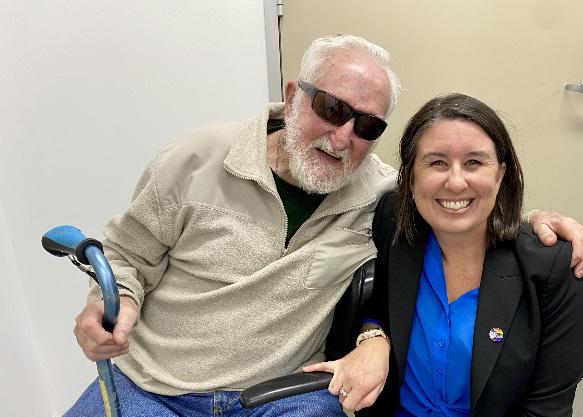


AMA ACT President Dr Kerrie Aust recently visited the team at Canberra Allergy, having heard wonderful reports from patients about the services they provide.
Dr Christopher McCue, a GP allergist who heads the team, has a background in rural generalism and did additional training in gastroscopy and colonoscopy. While working many years in rural Victoria, he became frustrated at his patients’ lack of access to allergy services, and that drove him to seek out additional training.
“I found a couple of really helpful and supportive immunologists who were keen to lend me a hand, and they steered me to
People from the LGBTIQA+ community who attend a breast screening appointment in the ACT will now receive a rainbow scarf to foster inclusivity and encourage health screenings.
some post graduate education,” he said.
Dr McCue is proud of the team he has assembled at Canberra Allergy over the last three years: Dr Tim West is a Specialist Physician in Immunology and Allergy and has a broad scope of practice in adult immunology; Dr Aimee Huynh is dual trained as a Specialist Physician in Paediatric Immunology and Allergy and General Paediatrics, with a particular interest in children with immunodeficiencies; Dr Sarah Tarrant is a GP Allergist with post-graduate qualifications in allergy medicine and experience treating neurodiverse kids; Dr
BreastScreen ACT launched the Inclusive Rainbow Threads Project to coincide with International Day Against Homophobia, Biphobia, Intersexism, and Transphobia.
Minister for Health Rachel Stephen-Smith emphasised the importance of creating a safe and welcoming environment for all individuals accessing breast screening services in the ACT.



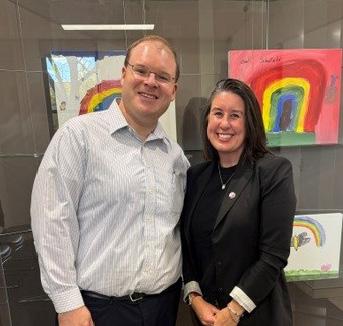
McCue has particular interest in the gastrointestinal aspects of allergy. The team also work closely with Canberra ENT.
“Patients with allergies have more access to the breadth of the health system thanks to the work we do,” Dr McCue said. The team is due to move to new rooms toward the end of this year.
“The Inclusive Rainbow Threads Project is a positive step towards ensuring that breast and chest screenings are accessible and inclusive for everyone, regardless of gender identity or sexual orientation,” Minister Stephen-Smith said.
The project is supported by BreastScreen ACT’s community of donors and supporters, Luton Properties, the ACT Government LGBTQIA+ and Social Inclusion Strategy Team, and the Canberra Hospital Foundation.
Don’t let the icy winds and thick fog deceive you – there’s plenty to do this winter in Canberra. And as any GP will tell you, staying active and connected is essential to beating the winter blues. Why not try some of the following?
Climbing gyms
Climbing gyms are great for building strength and focus while meeting new people. Try BlocHaus in Fyshwick or Mountain Strong in Mitchell.

Try King O’Malley’s, The Duxton or Grease Monkey for team trivia.
What's on ama.com.au/act/events
Sunday 22 June
Safe Space 9

AMA ACT with Drs4Drs ACT will host our next Safe Space event. Open to all local doctors and medical students. The day includes sessions on mindfulness and organisational skills, a light lunch and a painting workshop.
Wednesday 30 July Specialists Networking Dinner at ANU Food Co-op
Friday 1 August
AMA National Conference
AMA’s premier event of the year will be taking place in Adelaide (see page 11 for details).
JMO Career Nights - Explore Specialties
L2 B4 Auditorium, ANU Clinical School, TCH
Tues 24 June: Surgical Specialties
Tues 1 July: Medical Specialties
Tues 8 July: 'The Rest' (GP, ACRRM, TGA, Psych, Pathology, Locum etc)
Dr Kerrie Aust sends Shout Outs to Dr Anita Hutchison from Breastscreen for always providing such patient-centred handover to GPs, and to Dr Timothy West, immunologist, for being happy to chat through complex clinical cases. Can you think of an outstanding colleague who deserves credit for something they’ve done? Let us know at editorial@ama-act.com.au and we’ll include your Shout Out in our next edition.
There are multiple indoor sports teams in Canberra. Urban Rec offers many different types of sports and is a fun and social league, designed for meeting new people.
Canberra Dance Theatre offers many different types of dance classes to try.
Patrick White Terrace will be transformed into a winter wonderland over four days in July, with falling snow, fire pits, mulled wine, fine food, live music and artisan markets. The Christmas in July Festival runs from 3 July to 6 July, from 10 am to 11 pm. Entry is free.
Join the throng of Raiders fans turning up to GIO stadium to cheer on the Green Machine. Or book your tickets to watch one of Australia’s premier ice hockey teams, the Canberra Brave.
Mt Ainslie, Red Hill, and Black Mountain are lovely as ever on crisp winter days and offer breathtaking views across the bush capital.
Host a potluck dinner with friends!
Several public indoor pools are open during the winter months, including Tuggeranong Leisure Centre, Canberra Olympic Pool, Gungahlin Leisure Centre and Stromlo Leisure Centre.
Lake Burley Griffin walks or rides
Still beautiful in winter – just rug up and grab a coffee!
Held at locations like Lake Ginninderra, Gungahlin and Weston Park every Saturday morning. Parkrun is a 5K walk or run with a very friendly atmosphere.
Plenty of gyms in Canberra offer group fitness classes like yoga, HIIT, pilates, body pump, and zumba.

Check out Belco Arts group for creative workshops.
Check out current exhibitions online and go for a wander! The National Gallery of Australia’s Cézanne to Giacometti exhibition is on now, featuring many internationally significant works.

Positive psychology shifts the focus from what’s “wrong” to what’s strong. For GPs working on the frontline of mental health care, this perspective can complement traditional approaches by helping patients identify and harness their personal strengths to support well-being.
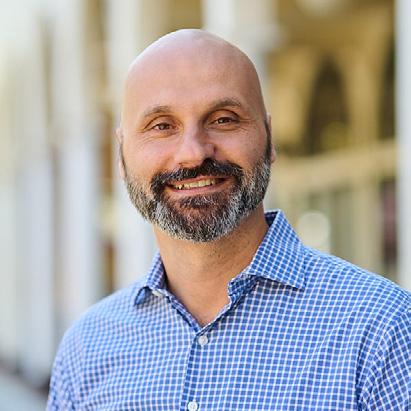
NESH NIKOLIC Strategic psychology
A strengths-based approach encourages patients to explore their existing capabilities, resources, and values. Rather than focusing solely on symptoms or deficits, this method invites patients to reflect on when they’ve coped well in the past, what gives them meaning, and where they draw resilience from. It builds self-efficacy and can be particularly effective alongside CBT, ACT, or other therapeutic modalities. For example, when supporting
a patient with low mood, a GP might explore strengths such as persistence, creativity, humour, or social connection. Even brief conversations that reframe the patient’s narrative toward capability can shift their mindset and open new avenues for coping.
Evidence suggests that using personal strengths in daily life is associated with greater well-being, life satisfaction, and lower rates of depression. For patients who feel stuck or helpless, focusing on what they can do—rather than what they can’t—can be a powerful motivator for change.
Simple, strengths-focused questions can be easily integrated into consults:
“When was the last time you felt you handled a tough situation well? What helped?”
“What do other people say you’re good at?”
“What activities give you energy or a sense of meaning?”
“Can you think of a time when you felt proud of how you coped?”
“What strengths have helped you get through challenges in the past?”
This doesn’t replace managing risk, medication, or referrals, but it can enrich those interventions. By integrating positive psychology principles into everyday consultations, GPs can empower patients to become active participants in their own mental health journey— one strength at a time.
If you’d like to read more about positive psychology approaches and how they apply to the demands GPs face, a good book is Positive Psychotherapy: Clinician Manual by Tayyab Rashid & Martin P. Seligman.
A News Magazine for all Doctors in the Canberra Region ISSN 13118X25
All electoral matter in this edition of Canberra Doctor is authorised by Peter Somerville on behalf of the Australian Medical Association (ACT) Ltd.
Published by the Australian Medical Association ACT Ltd
Level 1, 39 Brisbane Ave, Barton ACT 2600 (PO Box 560, Curtin ACT 2605)
Editorial
Sarah Colyer
sarah-colyer@ama-act.com.au
Design Juliette Dudley reception@ama-act.com.au
Advertising Ph 6270 5410 Fax 6273 0455 reception@ama-act.com.au
Contributions
Canberra Doctor welcomes reader contributions. Submit your stories to editorial@ama-act.com.au
The

I commenced the six-year University of Queensland medical course in 1967. At the end of the 4th year, 1970, I succumbed to a virulent attack of wanderlust, left the course and spent 1971 working and travelling. I had a wonderful year. I met so many friendly, sincere people and had many memorable experiences. However, 54 years later and now aged 75, one encounter still unsettles me whenever I think of it.
Decades ago, it was common for young Australians and young tourists to travel by hitchhiking. In January 1971 I hitchhiked from Brisbane to Sydney and on to Melbourne, with a diversion through Canberra and the Snowy Mountains. After two months as a kitchen hand at the Mt Buffalo Chalet I worked in a soft drink factory in Footscray. I lived in a share
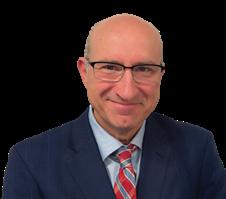
See answers on page 13
DR BILL COOTE
house in North Carlton with a lively group of Melbourne University Arts students. In July I flew to Europe and over four months hitchhiked around the UK and Ireland, across Holland, on to Munich, down through Austria and on to Trent, Venice and Rome and then through the French Alps to Paris. I stayed mainly in youth hostels and occasionally camped out. After returning, I was employed in the work gang that maintained the facilities and walking tracks in Lamington National Park, in the mountains west of the Gold Coast. In 1972 I returned to the regulated, hierarchical world of timetables, lectures and ward rounds for the final two years of the medical course. The most pleasant memories from 1971 are of the many friendly people I met: drivers who gave me lifts, colleagues in workplaces and, especially, fellow young trippers at youth hostels. However, my most memorable encounter, which still gives me the shudders whenever I think of it, occurred in late January of 1971. Standard advice if planning to hitchhike south from Sydney was to take the train to Liverpool. This was before the modern freeway was built. The Hume Highway ran close by the station and on through towns such as Picton and Camden. A young man, a few years older than me, stopped to pick me up at Liverpool. I opened a rear door to place my backpack on the rear seat. However, he insisted on placing my backpack in the car’s locked boot. As we proceeded down the highway, I recall growing uneasy. He gave evasive responses to my polite questions about how far he could take me and his detailed questions
about who I was, where I was from and where I was going went beyond common pleasantries. Somewhere along the road he stopped briefly and removed his outer shirt under which he was wearing a tightly fitting white T-shirt; my strongest memory of the whole encounter is of a strange, unnerving look he then gave me. I wanted to leave his company. As we drove through a town, I don’t remember if it was Camden, Picton or some other town, the car slowed down outside a café. I said I wanted to buy a cold drink and offered to shout him a drink. He parked and we got out. I lied, saying my wallet
I’ve often wondered if it was an 'early career' Ivan Milat who I encountered.
was in my backpack. He unlocked the boot. I took my backpack and after a curt goodbye walked off. I’ve often wondered if it was an “early career” Ivan Milat who I encountered. I’ll never know and if it was, whether he had any malevolent intent. The notorious, gruesome “backpacker murders” of young English and German tourists for which Ivan Milat was sentenced in 1996 to “a life sentence on each count without the possibility of parole” occurred in the late 1980s and early 1990s, two decades after my eerie encounter.
My man was of a similar age to Milat, a few years older than me, and of eastern European appearance. In early 1971, according to the Wikipedia entry on Milat, he was active in the Liverpool area, working as a labourer on the main roads between Sydney and Canberra. On 7 April 1971, Good Friday, he “abducted
two 18-year-old female hitchhikers” travelling from Liverpool railway station to Canberra for which he was arrested. While awaiting trial Milat “was involved in a string of robberies”. He faked his suicide by leaving his shoes at The Gap and “fled to Queensland and Victoria before flying to New Zealand where he lived for two years”. A Google search finds considerable speculation, some by detectives involved in the 1990s investigation of his crimes, that Milat committed murders many years earlier than 1990, including some unsolved murders in Queensland. There are credible suggestions that Milat’s first murder victim was a 20-year-old Canberra woman, Keren Rowland, who disappeared on the 26th of February 1971. Her car had run out of petrol along a Canberra freeway, Parkes Way. Her body was found three months later in the pine forest off Pialligo Ave between Canberra and Queanbeyan; autopsy findings included fractures of the hyoid bone. The police investigation in the early 1990s following the discovery of the bodies of several missing backpackers in the Belanglo State Forest north of Goulburn included a request for the public to provide possibly relevant information. I rang the designated phone number and related my 1971 experience. I was told that unless I could provide explicit information such as the make and model of the car or number plate details my story was of little value. I know little of the formal frameworks and diagnostic criteria psychiatrists and criminologists apply to assess and classify someone like Ivan Milat. I still recall all these years later an unsettling aura around my driver and how strangely uneasy I felt sitting beside him in his car. Whoever he was, I remain thankful that he accepted my bogus offer to buy him a drink.
Dr Bill Coote was Secretary General of the AMA from 1992-98.

108 Hawker Pl, Hawker, 2614
www.canberrahypnosis.com.au











It’s why more than 50% of GPs trust our local medico-legal and risk expertise, backed by our
• Local support from Avant Law nationwide
• Medico-legal expert s and resources
• GP-specific support
• Premium savings and deductions for eligible members#*


Get a quote avant.org.au/practitioners |